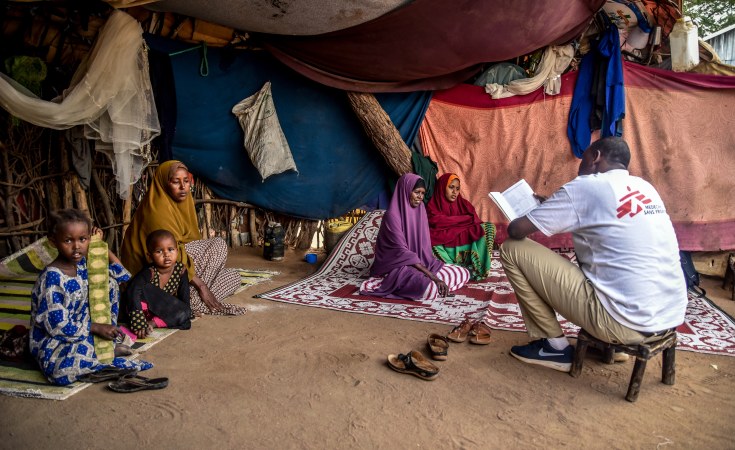The U.N. refugee agency warns humanitarian conditions are deteriorating for tens of thousands of Somalis in Kenya's Dadaab refugee camps as unrelenting drought grips the Horn of Africa and funding dries up.
More than 80,000 Somalis fleeing conflict and drought have arrived in Kenya's Dadaab refugee camps over the past two years, more than 24,000 since September.
This is exacting an enormous burden on the local communities and refugees already living in the camps, which house an estimated 230,000 refugees.
The U.N. refugee agency, UNHCR, reports refugees, especially those who have arrived since the end of September are in urgent need of assistance. It says shelter for the new arrivals is running out. This is forcing many to live in makeshift shelters, with limited or no access to clean water and sanitation.
To make matters worse, UNHCR spokesman Boris Cheshirkov said a cholera outbreak at the end of October has infected more than 350 people, mainly children. He said the spread of cholera is declining thanks to the efforts of health partners. However, the risk of further infection remains.
"UNHCR is providing new arrivals to Dadaab with clean drinking water and extending sanitation and hygiene facilities to the outskirts of the camps. We are also providing targeted protection services for the most vulnerable to ensure their needs are met. Malnourished children are being screened and admitted to stabilization centers," said Cheshirkov.
He notes the UNHCR also is assisting nearby host communities. It is rehabilitating boreholes, providing generators for water pumps, and trucking in water. While tending to the immediate needs of the refugees and local populations, he said the UNHCR, and the Kenyan government are seeking long-term solutions for this intractable problem.
Kenya has been hosting more than half a million refugees and asylum seekers in Dadaab and Kakuma refugee camps and urban areas for over three decades. This is the second largest number in Africa after Ethiopia.
Cheshirkov said neither voluntary repatriation to Somalia nor resettlement in third countries of asylum are viable solutions currently.
"What we are focusing on now is to find ways for refugees to become self-reliant in Kenya. And that includes through education, through vocational training and through access to financial services so that people can access businesses. So that they have a prospect as a longer-term solution is found to their plight," he said.
In the meantime, the UNHCR warns its life-saving operations for more than 257,000 drought-affected people in Kenya is foundering for lack of financial support. It notes only half of an appeal issued in June for $11.1 million has been met.


